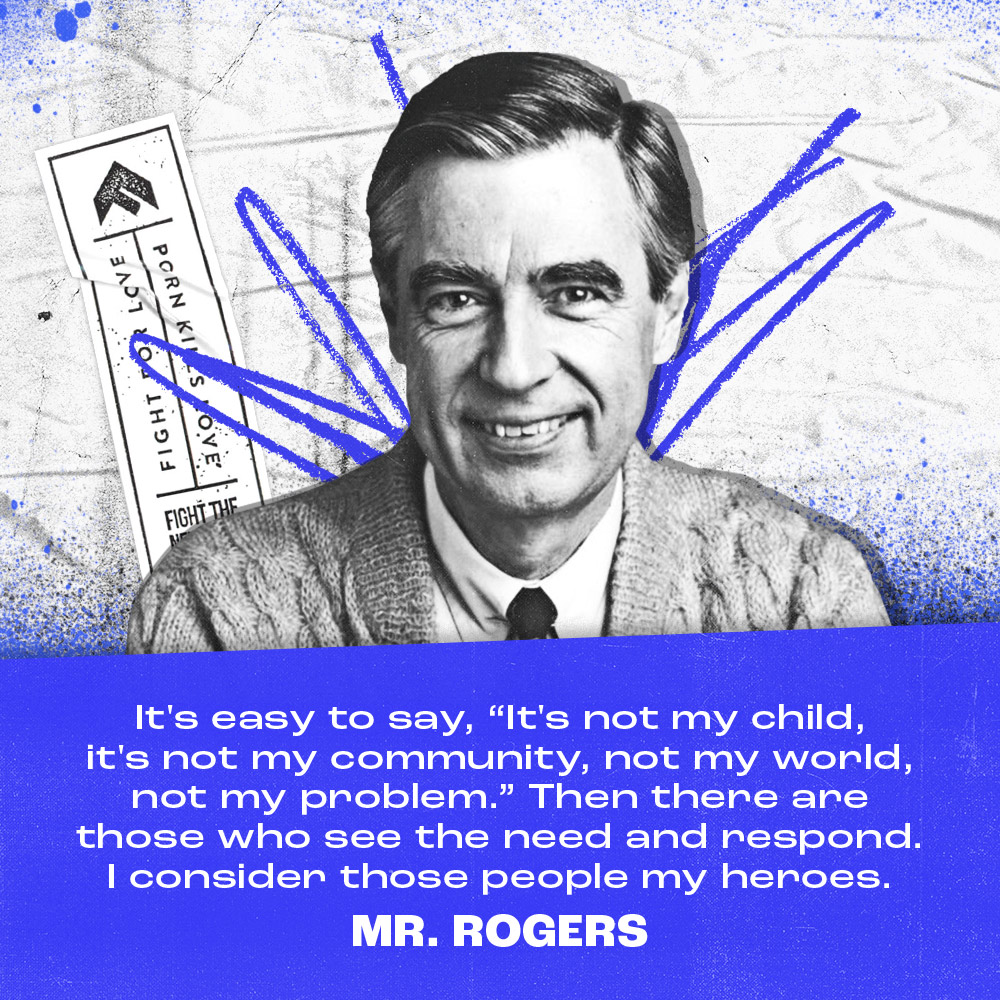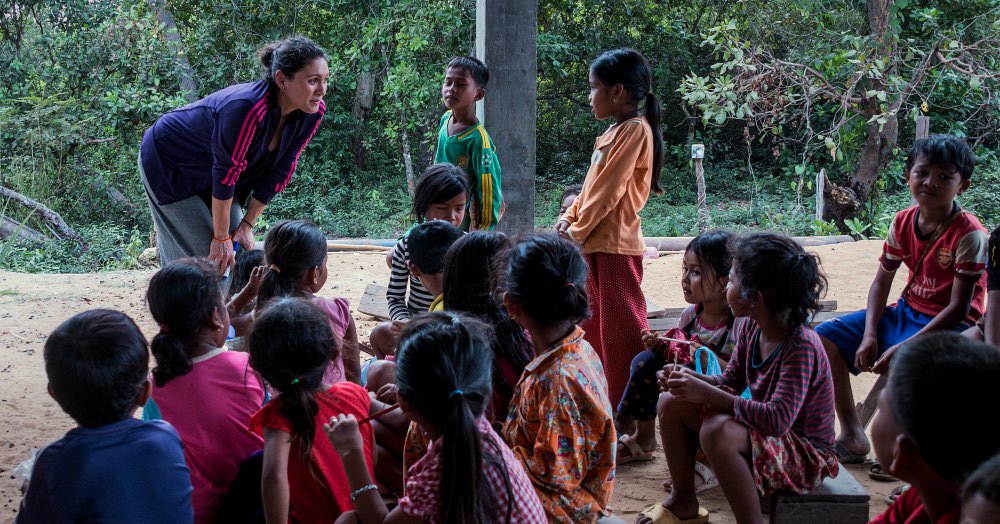Disclaimer: Some of the organizations discussed in the following article are religiously-affiliated. Fight the New Drug is a non-religious and non-legislative awareness and education organization hoping to provide access to resources that are helpful to those who need support. Including links and discussions about these organizations does not constitute an endorsement by Fight the New Drug.
The region of Southeast Asia is rich in culture and beauty. As every travel magazine says, there’s something for everyone.
Unfortunately, sandy beaches and diverse outdoor markets aren’t the only things people may associate with trips to this side of the world. Human trafficking is a devastating reality or a terrifying possibility for many children and teenagers.
Of the millions of human trafficking victims globally, reports estimate anywhere from 22% to 72% of girls are trafficked for sexual exploitation. But the crisis affects everyone: adult women (83% of whom are sex trafficked), men (10%), and boys (27%).
Sex trafficking is defined as a situation in which “a commercial sex act is induced by force, fraud, or coercion, or in which the person induced to perform such act has not attained 18 years of age.”
There have been some successes fighting exploitation, but like many industries, it changed with the introduction of the internet. To keep the conversation alive, we spoke with two organizations making a difference in Southeast Asia.
Trafficking prevention with Sala Bai
After the prevalence of human trafficking in Cambodia was made public, a French NGO (Agir Pour le Cambodge) sought a preventative solution and established Sala Bai.
Sala Bai is a hospitality school in Siem Reap, in the northwest part of the country. It functions as a hotel and restaurant operated by the young cohort of Cambodians currently participating in the 11-month vocational training program.
The students study English and specialize in a hospitality discipline such as front office work, cooking, housekeeping, or beauty therapy. They graduate with the promise of employment at the end of the term.
Related: How This Tech Startup Caught 25 Sex Traffickers And Rescued 50 Victims Last Year
We spoke with Sam McGoun of Touch Sala Bai, one of the organizations supporting the school. He spoke about the country’s young population mostly living in rural communities with fewer education opportunities, particularly among young girls.
At least 70% of Sala Bai’s intake is female and many have been out of the education system for a few years, working instead to contribute to their families. These students come from the most marginalized communities and from families that collectively earn less than $1,000 USD a year.
“We are there to alleviate poverty,” McGoun said. “And poverty being essentially the single greatest reason why trafficking would occur.”
McGoun explained that the key is an education that is efficient, short, and guarantees a job at the end. The school admits 150 students each year to study for free. After graduation, 100% of students find employment within a month or two. Many go on to five-star hotels where their first job pays on average three times more than their family’s income.
Related: Florida Man Created A Fake Anti-Trafficking Nonprofit To Lure Teens Into Trafficking, FBI Says
“This school doesn’t only change the lives of young Cambodians,” McGoun said. “It changes the lives of families because the first thing a young Cambodian will do is take a big percentage of that income and send it home. So when we talk about 1,500-1,600 graduates from Sala Bai, we’re talking about alleviating over 8,500 from poverty. That’s 8,500 people with less risk in their lives, including the risk of young people for trafficking.”
Thankfully, they aren’t the only ones fighting sexual exploitation in tangible ways.
Perfecting the criminal justice system with IJM
In a neighboring country, the vision of International Justice Mission is to end modern-day slavery and violent forms of oppression.
Their multifaceted approach includes working with local and international law enforcement to rescue victims, supporting victim rehabilitation, partnering with government prosecutors, and encouraging governments to dedicate more funding to ultimately take ownership of the issues.
Related: A Guy At An Art Gallery Tried To Traffic Me Into The Commercial Sex Industry
We spoke with Lydia Bowden, Director of Strategic Partnerships in Singapore, to hear about the organization’s recent work in the Philippines. She spoke of a growing number of online sexual exploitation of children cases (OSEC), also known as cybersex trafficking. Perpetrators from anywhere in the world can find and pay an adult in the Philippines who will arrange internet live-streams and webcam shows.
Children are forced to perform sex acts, sometimes even on their siblings. They are tragically at the “service” of the buyer’s request.
This abuse tends to affect younger children. Of the OSEC victims IJM has rescued, 47% were 12 years old and younger with the youngest being a two-month-old baby. Unfortunately, this is possible because the trafficker in some OSEC cases is the child’s parent.
While poverty is one of the factors contributing to a person’s vulnerability to sex trafficking, Bowden said IJM is trying to debunk the myth that OSEC is poverty-driven.
“While some of the kids we rescue are from poor communities, we also rescue kids from gated subdivisions,” Bowden said. “There are plenty of poor people who don’t sell their kids.”
Live-streaming or webcam shows are more opportunistic—easy money. Their digital nature lowers the barriers to entry. Anyone with a WiFi connection can film a session and take online payments. It’s this ease of access that complicates the issue beyond poverty or job opportunities.
“If there wasn’t demand,” Bowden said, “I don’t think these parents would be doing it.”
What you can do
Sex trafficking may seem like a faraway issue—one that happens in other countries or doesn’t affect you personally. We’d like to do a little myth-busting of our own. Sex trafficking is everywhere, especially since the internet and the rise of online sexual exploitation. This is not a foreign country problem. It’s a problem inside of your very own pocket.
Related: Meet The Researchers Developing Apps To Educate People About Sex Trafficking
It may also be difficult to imagine how there can be a demand for such devastating abuse. There could be any number of reasons why a person decides it’s okay to buy another human, but we do know that a part of the puzzle is linked to online pornography and even mainstream porn, which can fuel the demand for sex trafficking.
Dr. Karen Countryman-Roswurm, Founding Executive Director at Center for Combating Human Trafficking at Wichita State University, put it this way:
“The images that occur within pornography actually encourage, promote, and normalize that people want violence during sex…. Pornography absolutely perpetuates abuse. It perpetuates human trafficking. It dehumanizes people.”
At the end of speaking with Sam McGoun and Lydia Bowden, they both expressed a desire for more conversations to get the word out about the realities of trafficking.
Related: This Train Passenger’s Tweet Saved 25 Girls From Human Trafficking
Talk to your friends and people around you. Do your part to myth bust and educate about the realities of sexual exploitation. Talking about sex trafficking won’t in itself stop all sex trafficking, but having awareness is the first step to ending exploitation.

Your Support Matters Now More Than Ever
Most kids today are exposed to porn by the age of 12. By the time they’re teenagers, 75% of boys and 70% of girls have already viewed itRobb, M.B., & Mann, S. (2023). Teens and pornography. San Francisco, CA: Common Sense.Copy —often before they’ve had a single healthy conversation about it.
Even more concerning: over half of boys and nearly 40% of girls believe porn is a realistic depiction of sexMartellozzo, E., Monaghan, A., Adler, J. R., Davidson, J., Leyva, R., & Horvath, M. A. H. (2016). “I wasn’t sure it was normal to watch it”: A quantitative and qualitative examination of the impact of online pornography on the values, attitudes, beliefs and behaviours of children and young people. Middlesex University, NSPCC, & Office of the Children’s Commissioner.Copy . And among teens who have seen porn, more than 79% of teens use it to learn how to have sexRobb, M.B., & Mann, S. (2023). Teens and pornography. San Francisco, CA: Common Sense.Copy . That means millions of young people are getting sex ed from violent, degrading content, which becomes their baseline understanding of intimacy. Out of the most popular porn, 33%-88% of videos contain physical aggression and nonconsensual violence-related themesFritz, N., Malic, V., Paul, B., & Zhou, Y. (2020). A descriptive analysis of the types, targets, and relative frequency of aggression in mainstream pornography. Archives of Sexual Behavior, 49(8), 3041-3053. doi:10.1007/s10508-020-01773-0Copy Bridges et al., 2010, “Aggression and Sexual Behavior in Best-Selling Pornography Videos: A Content Analysis,” Violence Against Women.Copy .
From increasing rates of loneliness, depression, and self-doubt, to distorted views of sex, reduced relationship satisfaction, and riskier sexual behavior among teens, porn is impacting individuals, relationships, and society worldwideFight the New Drug. (2024, May). Get the Facts (Series of web articles). Fight the New Drug.Copy .
This is why Fight the New Drug exists—but we can’t do it without you.
Your donation directly fuels the creation of new educational resources, including our awareness-raising videos, podcasts, research-driven articles, engaging school presentations, and digital tools that reach youth where they are: online and in school. It equips individuals, parents, educators, and youth with trustworthy resources to start the conversation.
Will you join us? We’re grateful for whatever you can give—but a recurring donation makes the biggest difference. Every dollar directly supports our vital work, and every individual we reach decreases sexual exploitation. Let’s fight for real love:





